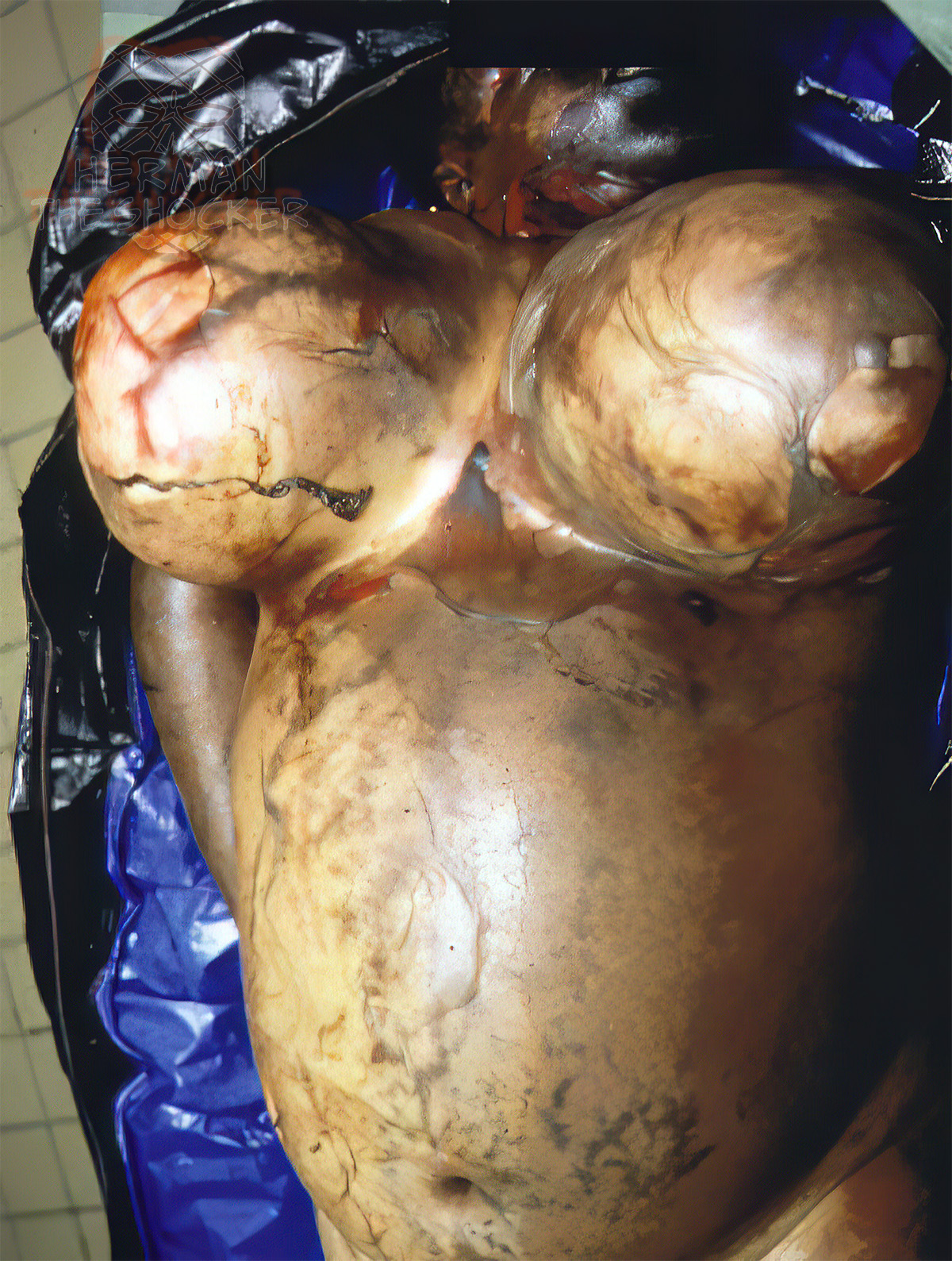Moderately early changes of decomposition, showing gaseous distension of the breasts and abdomen. Skin slippage, marbling, and blistering can be seen. Gas formation will now become marked, with increased tension in the abdomen. The breasts may swell up to remarkable size and the neck and face will become grotesquely bloated, making visual identification difficult or impossible. The pressure may cause the eye globes and tongue to protrude. Purging of urine and faeces may occur due to the intra-abdominal pressure and, occasionally, a uterine prolapse may be extruded. There are recorded instances of pregnant women having a macabre post-mortem ‘delivery’ of the fetus, from the same cause.
Decomposition, or putrefaction, is a combination of two processes: autolysis and bacterial action. Autolysis is the breakdown of cells and organs through an aseptic chemical process caused by intracellular enzymes. Because it is a chemical process, it is accelerated by heat, slowed by cold, and stopped by freezing. Bacterial action results in the conversion of soft tissues in the body to liquids and gases. The chemicals produced as a result of the putrefaction are cadaverine and putrescine, hydrogen sulfide and other sulfides, which generate a horrible smell.
Putrefaction begins immediately upon death and usually becomes noticeable within 24 hours. As soon as death occurs, the bacteria or microorganisms within the intestinal tract escape from the bowel into the other tissues of the body. As they grow, they begin to produce gases and other properties that distort and discolor the tissues of the body.
The decomposition of the gastrointestinal tract results in a dark, foul-smelling liquid called “purge fluid” that is forced out of the nose and mouth due to gas pressure in the intestine. The skin discoloration is a dark greenish combination of colors and is generally pronounced within 36 hours. As a result, the body begins to swell from the putrefactive gases, emitting an extremely repugnant odor.
The rate of decomposition depends on the temperature, ground conditions, amount of clothing, size of the body, etc. For example, a body in a warm climate will not only encourage insect attack from the outside, but will also increase the interior bacteria development and subsequent tissue attack from within. As the tissues inside are destroyed and enzymes released, the gases formed emit a foul and sickening smell.
Latest posts








